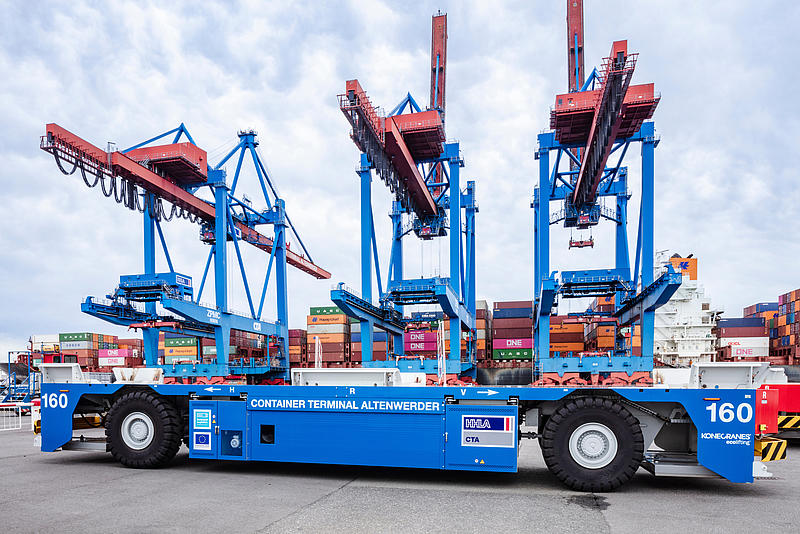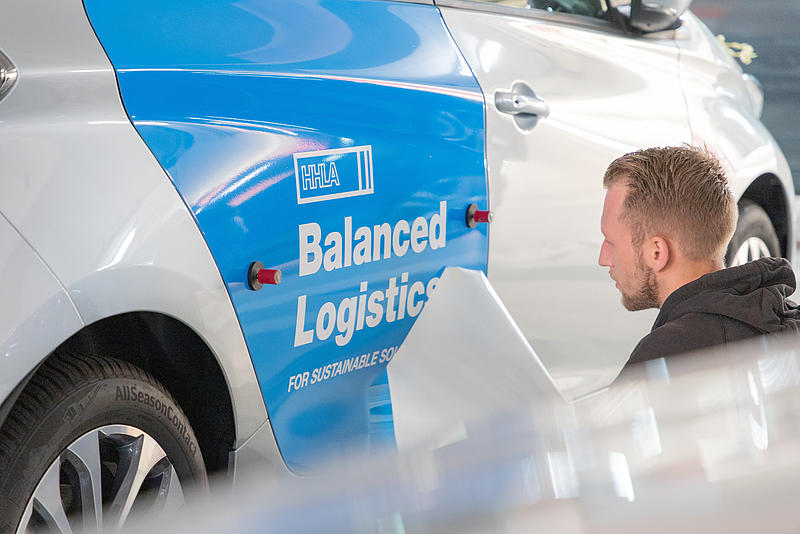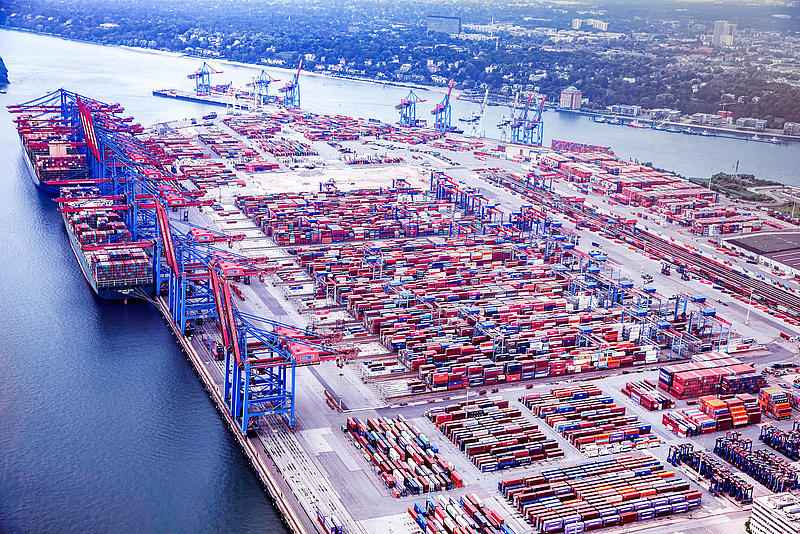Quicklinks
Quicklinks

For example, the entire fleet of container transporters, known as Automated Guided Vehicles (AGVs), at Container Terminal Altenwerder (CTA) has been converted to electrified operation. The AGV fleet now consists of 95 battery-powered vehicles that run on green electricity. By switching to battery-powered AGVs and the associated significant reduction in diesel consumption, around three million litres of diesel are saved at CTA every year. This corresponds to around 8,000 tonnes of CO2 emissions.

In addition, about 120 battery-powered passenger cars are already in operation. The vehicles are used by employees at the terminals to move between the facilities. They are also used as shuttle services and first aid vehicles. The entire e-fleet relies on electricity from renewable energy sources. A comprehensive network of charging stations ensures that HHLA employees can find an electric car if needed. A large proportion of the e-vehicles move only within the respective terminal boundaries, but nevertheless, annual mileages of 25,000 km and more are not uncommon, as the terminals operate 24/7. This results in over 700,000 kilometres being covered by HHLA’s e-fleet every year. The use of e-vehicles reduces both noise pollution and carbon emissions. In addition, battery-powered passenger cars require significantly less maintenance than vehicles with combustion engines.
Electrification is also underway at the other terminals. At the Container Terminal Burchardkai for example, the electrified storage crane system is being continuously expanded and was supplemented by two new storage blocks with six cranes in the beginning of 2023. In the case of terminal facilities which, in HHLA’s view, cannot yet be electrified in any meaningful way, the focus is on increasing energy efficiency through hybrid drives. In 2023, 8 new large units with hybrid technology were added to the fleet. With this technology, carbon emissions are reduced by around 30 percent compared to earlier models.

The HHLA subsidiary METRANS is also striving for electrification. For example, since 2021 all METRANS trains operating in Germany have been powered exclusively by renewable energy. This conversion will cut carbon emissions from METRANS by approximately 65,000 tonnes per year.
And HHLA is also implementing measures to use renewable energy at its sites abroad. For example, operations at the Container Terminal Tallinn in Estonia switched to green electricity in mid-2021. With the terminal’s total annual consumption amounting to approximately 3.7 million kilowatt hours, this will achieve carbon savings of approximately 2,500 tonnes per year. In 2022, a photovoltaic system was commissioned for the self-supply of electricity. Climate action at HHLA is Group-wide.
It is our aspiration to combine ecological, social and economic interests in order to make our company future-proof. We underline this with our "Balanced Logistics" sustainability strategy.
Read more